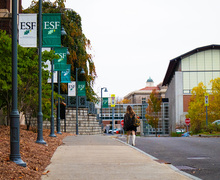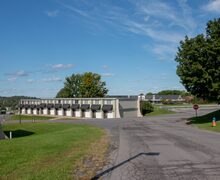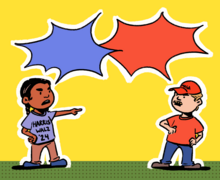Students, community explore details of same-sex marriage
More than 170 local citizens, including about a dozen students and faculty from Syracuse University and SUNY ESF, attended a town meeting focusing on the current debate about same-sex marriages Wednesday at the First Unitarian Universalist Church of Syracuse.
‘I’m really happy with how many people from SU and ESF came out,’ said Adrea Jaehnig, director of the Lesbian, Gay, Bisexual and Transgender Resource Center. ‘It’s really important to bring all aspects of the community together.’
The meeting began with a presentation, ‘The Marriage and Family Recognition for Same-Sex Couples,’ by the Empire State Pride Agenda, which explained the various definitions and history of marriage, and the recent political and cultural viewpoints of it.
Ross Levi, director of public policy and governmental affairs of the Pride Agenda, conducted the majority of the presentation and invited community members to speak about certain issues. He then led a question-and-answer session and described ways local opponents to the proposed amendment could take action.
‘It is actually true that this moment in our history as a movement places us on the precipice of finally winning full equality under the law,’ said Carmen Vazquez, deputy executive director of Pride Agenda. ‘But it is also a time of great peril for us. We need clear information, and we need to be willing to organize ourselves. And we need to be willing to struggle with out friends and relatives, which requires us to be very brave.’
President George W. Bush proposed a constitutional amendment outlawing same-sex marriages in March, and the New York State Legislature is currently debating a Defense of Marriage Act, already enacted in 38 other states, defining marriage as between a man and woman, Levi said.
In New York state, marriage protects nearly 1,800 rights. This consists of 1,138 federal rights, including immigration rights, veterans benefits and pension rights, and more than 700 state rights, including hospital visitations, inheritance rights and presumption of parenthood, Levi said.
Parenthood affects an estimated one in four couples of the most recent census’ 44,000 same-sex households in New York state, Levi said.
Amy Faulkner, an advertising professor from SU, and her partner adopted two children 17 and 16 years ago, and the two presented some of their experiences.
The couple, who often had to explain to people why they chose to adopt, why they couldn’t file taxes together and why they had more difficulty with certain processes that married people take for granted, often worry that something unexpected could happen that they could not easily control because they lack marriage rights.
‘We never really know what things are going to come up,’ Faulkner said.
Will Docile and Joe Downing, who married last August in Canada following its legalization of same-sex marriages, presented some of their concerns for their family.
‘I know what marriage is about, and I am confident that Will and I are married,’ said Downing, who had been married to a woman for 18 years before his relationship with Docile. ‘But the thing that worries me is all the little things you don’t think about, those 1,800 benefits.’
Marriage is defined in two ways, as a religious marriage and a legal marriage, Levi said. A religious marriage is not legally binding, is controlled by a faith tradition, and the clergy has no obligation to perform or recognize any marriage. A legal marriage, however, grants those 1,800 rights.
Marriage is a human, sacred institution that should not be violated with same-sex marriages, argue some proponents of the same-sex marriage prohibition amendment.
But the definition of marriage has changed over time, and in the past, arranged and incestual marriages among royalty were normal, Levi said. Interracial marriages were not legally protected until 1967.
Pride Agenda has presented at equally well-attended town meetings in many New York cities, including Rochester, Albany and Buffalo, and the group plans to visit a total of 12 by June, Levi said.
‘Some people have seen it as activating the LGBT community like nothing has since the height of AIDS,’ Levi said. ‘This issue has brought the politics home, literally.’
But some audience members wish that more people from beyond the LGBT community had attended the meeting.
‘It would’ve been nice to have more people here from outside the community,’ said Gretchen Barfoot, a Syracuse resident.
Representatives from the Central New York chapter of the American Civil Liberties Union, PFLAG, Syracuse’s Gay and Lesbian Chorus and the LGBT Resource Center set up information tables on the side of the reception room.
‘This meeting’s a sign that there are lesbians and gay people in Central New York, with family and community members, who want this right and their friends and families want them too,’ Vazquez said.
Published on April 7, 2004 at 12:00 pm





